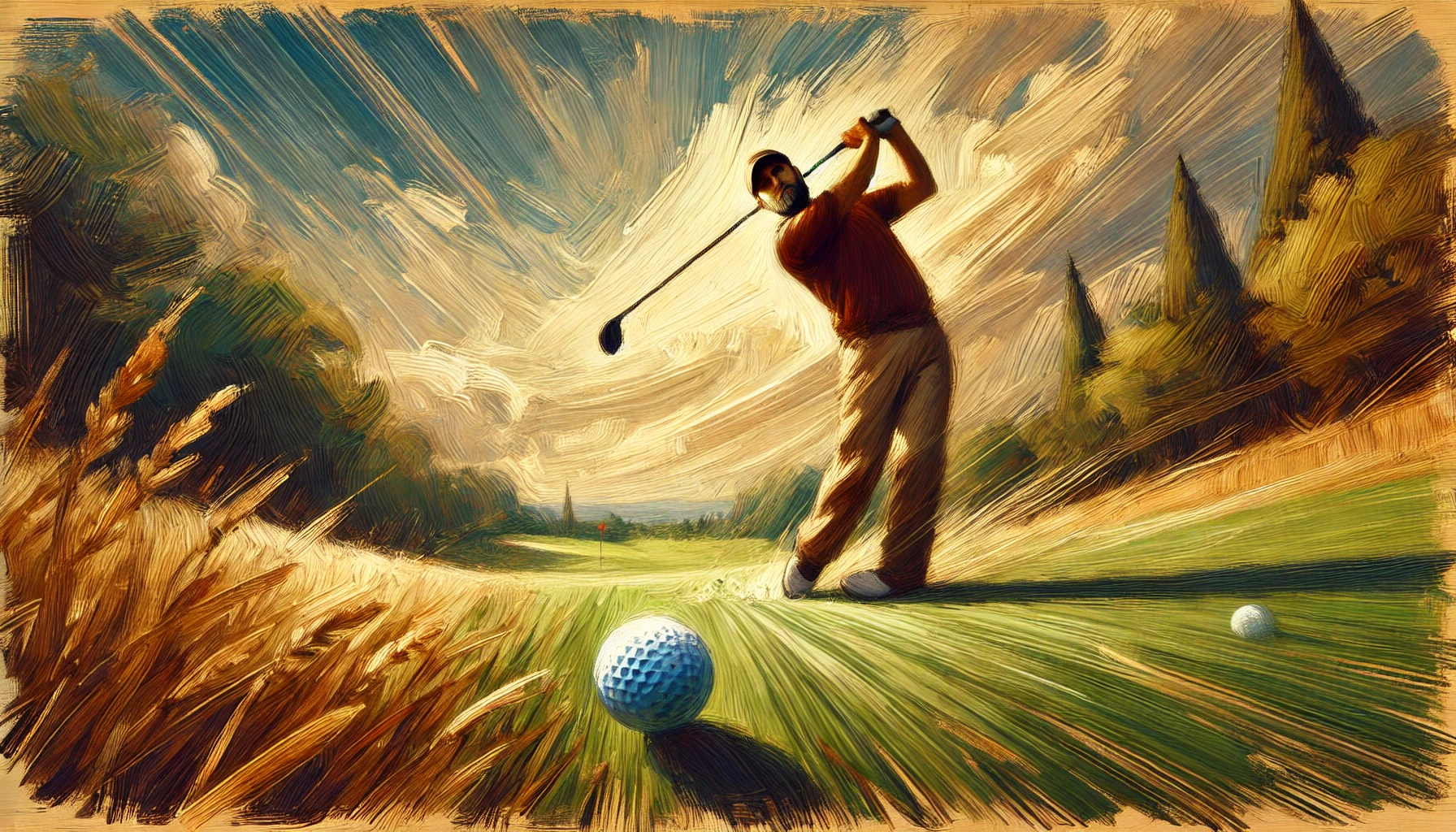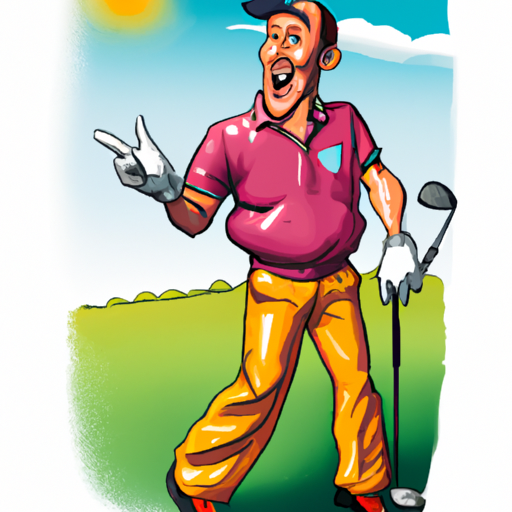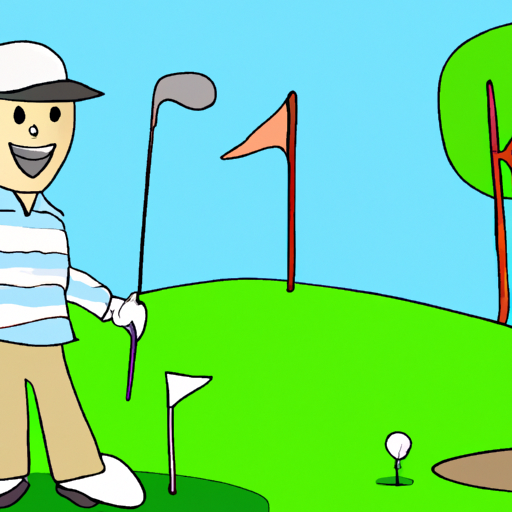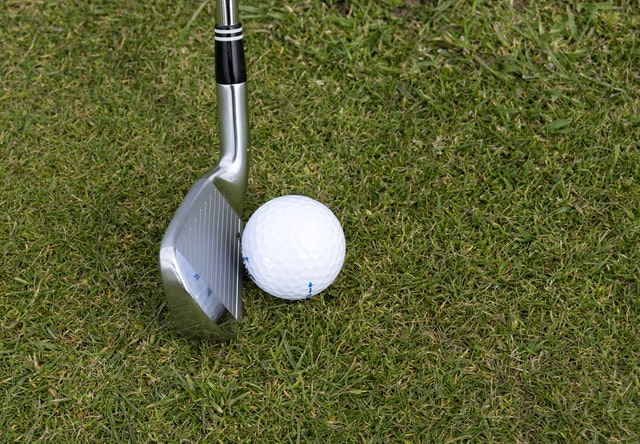Taming The Slice: Your Ultimate Guide To Crushing This Golfing Nemesis
Ah, the dreaded golf slice.
If you're reading this, chances are you've battled with this frustrating shot more times than you'd care to admit. Trust me, I've been there. That sinking feeling as you watch your ball veer off to the right (for right-handed golfers) like it's trying to escape the course altogether? Yeah, I know it all too well.
But here's the thing: understanding and fixing your slice isn't just about improving your score. It's about reclaiming your confidence on the course, impressing your buddies, and finally enjoying the game the way it's meant to be played. No more watching enviously as your playing partners rip drives straight down the fairway while you're fishing your ball out of the woods... again.
In this guide, I'm going to break down everything you need to know about the golf slice. We'll dive into what causes it, how to diagnose your own swing issues, and most importantly, how to fix it. I'm talking real, actionable advice that you can take to the range today and start seeing results. Because let's face it - life's too short for bad golf shots.
So, are you ready to kiss that slice goodbye and start hitting the kind of shots that'll have your playing partners wondering if you've been secretly training with the pros? Let's dive in and unlock the secrets to straighter, longer drives that'll have you strutting down the fairway like you own the place.
 Understanding the golf slice: Causes and corrections
Understanding the golf slice: Causes and correctionsWhat Causes A Golf Slice?
Let me take you back to a moment that changed my golfing life forever. Picture this: I'm standing on the first tee at my local course, surrounded by my regular Saturday foursome. The pressure's on as I step up to the ball, determined to start the round with a booming drive right down the middle.
I take my swing, feeling pretty good about the contact. But as I look up, my heart sinks. The ball starts straight, then takes a sharp right turn, slicing its way into the trees with a sickening "thwack." My buddies try to hide their smirks as I trudge off to find my ball, my confidence in tatters before we've even made it to the first green.
That was my reality for years. Every round was a battle against the slice, and let me tell you, it was exhausting. But that day, something in me snapped. I was determined to figure out what was causing this nightmare shot and how to fix it once and for all.
So, I dove headfirst into the world of golf swing mechanics. I watched countless videos, pestered every pro I could find, and spent more hours on the range than I care to admit. And you know what? I discovered that understanding the cause of a slice is the first step to fixing it.
Here's the deal: a slice happens when your clubface is open relative to the path of your swing at impact. This imparts sidespin on the ball, sending it curving to the right (for right-handed golfers). It's like throwing a frisbee with the edge tilted up - it's going to curve in that direction.
But why does this happen? Well, there are a few common culprits:
1. Weak grip: If your hands are rotated too far to the left on the club, it's tough to square the face at impact.
2. Outside-in swing path: This is when your club approaches the ball from outside the target line, cutting across it at impact.
3. Poor rotation: If your body doesn't rotate properly through the swing, your arms take over, often leading to an open clubface.
4. Improper weight shift: Failing to transfer your weight correctly can leave the clubface open at impact.
Understanding these causes was a game-changer for me. Suddenly, my slice wasn't some mysterious force of nature - it was a problem with a solution. And let me tell you, that realization was more exciting than hitting a hole-in-one (which, thanks to my slice, wasn't something I had to worry about at the time).
But here's the kicker: knowing the cause is only half the battle. The real magic happens when you start applying this knowledge to your own swing. And that's exactly what we're going to dive into next.
Are you ready to start diagnosing your own slice and take the first step towards straighter, more powerful drives? Let's do this!
How Can I Diagnose My Golf Slice?
Alright, my fellow weekend warrior, it's time to put on your detective hat and start cracking the case of your slice. Trust me, once you learn to diagnose your own swing issues, you'll be well on your way to becoming the golfer you've always dreamed of being.
Now, I'll let you in on a little secret: diagnosing your slice doesn't require a Ph.D. in golf biomechanics or some fancy high-speed camera setup. All it takes is a keen eye, a bit of patience, and maybe a friend with a smartphone camera if you want to get fancy.
Here's how I learned to diagnose my own slice, and how you can too:
1. Watch your ball flight:
It sounds obvious, but really paying attention to how your ball moves through the air can tell you a lot. A slice will start straight or slightly left of your target before dramatically curving to the right.
It curves so you can see the side of the ball, which means you're imparting a wicked amount of side spin.
2. Check your divots:
After you hit a shot, take a look at your divot. Is it pointing left of your target? That's a telltale sign of an outside-in swing path, one of the main slice culprits.
3. Look at your clubface at impact:
This one's tricky to see yourself, which is where a friend with a camera comes in handy. If your clubface is open (pointing right of the target) at impact, you're likely to slice the ball.
4. Examine your grip:
Look down at your hands on the club. Can you see more than two knuckles on your left hand (for right-handed golfers)? If not, your grip might be too weak, leading to an open clubface.
5. Feel your weight shift:
During your backswing, do you feel your weight shift to your right side? And more importantly, does it shift back to your left side during the downswing? If not, you might be leaving your weight on your back foot, another common slice cause.
I'll never forget the day I finally figured out my own slice diagnosis. I was at the range, hitting ball after ball into the right-side netting, when I decided to really focus on these diagnostic steps. As I went through them, I realized my grip was weaker than a watered-down beer, and my swing path looked like I was trying to chop down a tree rather than hit a golf ball.
It was a eureka moment. Suddenly, my slice wasn't this mysterious force ruining my rounds. It was a specific problem with specific causes. And you know what that means? It had specific solutions.
But here's the thing - diagnosing your slice is just the beginning. It's like a doctor figuring out what's making you sick. The real magic happens when you start applying the treatment. And that's exactly what we're going to cover next.
So, are you ready to turn that diagnosis into a cure and start hitting the kind of shots that'll make your playing partners wonder if you've been secretly replaced by a tour pro? Let's dive in and fix that slice once and for all!
What Are The Best Techniques To Fix A Golf Slice?
Alright, my slice-battling buddy, this is where the rubber meets the road. Or should I say, where the clubface meets the ball? We've diagnosed the problem, and now it's time for the fun part - fixing that pesky slice and unleashing your inner golf beast!
Now, I'm not gonna lie to you. When I first started trying to fix my slice, I felt like I was wrestling an octopus. My arms and legs were going everywhere, and I was pretty sure I looked more like a drunk flamingo than a golfer. But stick with me here, because I'm about to share the techniques that turned my banana ball into a power fade that would make even the pros nod in approval.
Here are the wickedly effective strategies that'll have you ripping drives straighter than a laser beam:
1. Strengthen that grip:
Remember how we talked about a weak grip causing slices? Time to man up (or woman up) that grip! Rotate your hands slightly to the right on the club. You should see 2-3 knuckles on your left hand at address. It feels weird at first, but trust me, it works wonders.
2. Fix your alignment:
Often, we subconsciously align ourselves to the right to compensate for the slice. Break this habit! Align your feet, hips, and shoulders parallel to the target line. It might feel like you're aiming left, but that's just your slice brain playing tricks on you.
3. Swing from the inside:
Remember that outside-in swing path we diagnosed? Let's flip the script. Focus on bringing the club back slightly inside the target line on your backswing, then drop it into the slot on the downswing. Imagine you're hitting the inside quadrant of the ball.
4. Release the club:
Many slicers hold off their release, keeping the clubface open through impact. Practice rotating your forearms through the hit. Feel like you're turning the clubface over. It might feel like you're going to hook it, but that's just your slice instincts fighting back.
5. Use the "bump and turn":
At the start of your downswing, bump your hips towards the target before starting your rotation. This helps shallow out your swing path and promote an in-to-out path.
Now, I know what you're thinking. "That's a lot to remember! How am I supposed to do all that in the 1.2 seconds it takes to swing a golf club?" And you're right. That's why I'm going to let you in on a little secret that revolutionized my own swing.
I call it the "One Thought Technique." Instead of trying to remember all these fixes at once, pick ONE to focus on each range session or round. Maybe today you're all about that grip. Tomorrow, it's all release, all the time. This approach lets you groove each change without overwhelming your brain.
I'll never forget the day this all clicked for me. I was on the 18th tee, water all down the right side (hello, slice city!). I took a deep breath, focused on my one thought for the day ("release the club"), and let it rip. The ball started straight, had a beautiful little baby fade, and landed right in the middle of the fairway. My playing partners' jaws hit the floor, and I strutted down that fairway like I owned the place.
That's the moment I knew I'd cracked the code. And let me tell you, there's no better feeling in golf than watching your ball soar straight and true, knowing you've conquered one of the game's biggest demons.
So, are you ready to kiss that slice goodbye and start hitting the kind of shots that'll have you grinning from ear to ear? It's time to take these techniques to the range and start your journey to slice-free golf. Trust me, your scorecard (and your buddies' egos) will never be the same!
Key Takeaways: Mastering Your Golf Swing
Alright, my fellow golf enthusiasts, we've covered a lot of ground in our quest to banish that pesky slice. Now, let's wrap it all up with some key takeaways that'll have you hitting straighter, longer drives faster than you can say "fore!"
Here are the core actionable tips you can use immediately to transform your slice into a power fade:
- It strengthens your grip so you can square the clubface at impact, which means more powerful, straighter shots.
- It promotes an inside-out swing path so you can hit draws instead of slices, which means lower scores and more bragging rights.
- It encourages proper weight transfer so you can generate more power and consistency, which means outdriving your buddies and feeling like a golf god.
- It focuses on releasing the club through impact so you can eliminate that slice-causing open face, which means no more lost balls and frustrating rounds.
- It utilizes the "bump and turn" technique so you can shallow out your swing path, which means better contact and more distance.
Remember, Rome wasn't built in a day, and neither is a slice-free golf swing. But with these tips in your arsenal, you're well on your way to golf greatness. So, what are you waiting for? Grab those clubs, head to the range, and start putting these techniques into practice.
Your dream of crushing drives down the middle of the fairway is closer than you think. Are you ready to take your game to the next level and become the golfer you've always wanted to be? The tee is yours - now go out there and show that slice who's boss!
FAQ: Everything Else You Need To Know About Golf Slices
What is a golf slice?
What is a golf slice?
A golf slice is a shot that curves dramatically from left to right for right-handed golfers (and right to left for lefties). It's caused by sidespin imparted on the ball due to an open clubface at impact relative to the swing path.
Why do I slice my golf ball?
Why do I slice my golf ball?
You're probably thinking it's just bad luck or a lack of natural talent, right? Well, actually, it's usually due to a combination of factors like a weak grip, outside-in swing path, or improper weight shift. The good news is, these are all fixable with the right techniques and practice.
How do I stop slicing my driver?
How do I stop slicing my driver?
To stop slicing your driver, focus on strengthening your grip, aligning yourself properly, swinging from the inside, releasing the club through impact, and using the "bump and turn" technique. Remember, it's a process, so be patient and consistent in your practice.
Can a golf slice be fixed?
Can a golf slice be fixed?
Absolutely! You're probably thinking a slice is a permanent curse, right? Well, I used to think that too until I discovered the techniques we've discussed. With understanding, practice, and the right approach, you can definitely fix your slice and start hitting straighter shots.
What is the difference between a slice and a fade in golf?
What is the difference between a slice and a fade in golf?
A slice is an unintentional shot that curves dramatically from left to right (for right-handed golfers), while a fade is a controlled shot with a slight left-to-right curve. A fade is often intentional and can be a useful shot shape in certain situations.
How do I fix my golf slice with irons?
How do I fix my golf slice with irons?
The principles for fixing a slice with irons are similar to those for drivers. Focus on your grip strength, swing path, and clubface control. Practice hitting half-shots to groove the feeling of a square clubface at impact.
What are the best golf balls for slicers?
What are the best golf balls for slicers?
You're probably thinking you need some magic ball to fix your slice, right? Well, while no ball can completely cure a slice, some balls with lower spin rates can help reduce the severity. Look for balls marketed as "low spin" or "straight flight."
How do I practice to eliminate my golf slice?
How do I practice to eliminate my golf slice?
Start with the driving range, focusing on one aspect of your swing at a time. Use alignment sticks to check your setup, and consider videoing your swing for analysis. Remember, consistent practice is key to lasting improvement.
Can changing my golf clubs help reduce my slice?
Can changing my golf clubs help reduce my slice?
While technique is most important, clubs can play a role. Drivers with adjustable weights or "draw bias" can help. However, it's crucial to address the root causes in your swing for long-term improvement.
Is it normal to slice the ball as a beginner golfer?
Is it normal to slice the ball as a beginner golfer?
Yes, slicing is common among beginners. You're probably thinking everyone else picked up perfect swings instantly, right? Well, even pros battled slices early on. The key is to address it early and not let it become a persistent habit.
How long does it typically take to fix a golf slice?
How long does it typically take to fix a golf slice?
The time it takes to fix a slice varies depending on the severity of the slice, how often you practice, and how effectively you implement changes. With dedicated practice, you could see improvements in a few weeks, but be patient - lasting change takes time.
Can a strong grip cause a slice?
Can a strong grip cause a slice?
Actually, a strong grip typically helps prevent a slice. It's usually a weak grip that contributes to slicing. However, an extremely strong grip could lead to a hook, so finding the right balance is key.
What is the role of shoulder alignment in preventing a slice?
What is the role of shoulder alignment in preventing a slice?
Proper shoulder alignment is crucial. You're probably thinking it's all in the hands and arms, right? Well, if your shoulders are aligned too far right of the target (for right-handed golfers), it can promote an out-to-in swing path, leading to a slice.
How does club path affect slicing?
How does club path affect slicing?
Club path is critical. An out-to-in swing path (coming across the ball from outside to inside) is a major cause of slicing. Focus on swinging more from the inside to promote a straighter ball flight or even a draw.
Can changing my ball position help reduce my slice?
Can changing my ball position help reduce my slice?
Yes, ball position can affect your slice. For drivers, try moving the ball slightly back in your stance. This can help you catch the ball earlier in your swing arc, promoting a squarer clubface at impact.
What's the impact of swing speed on slicing?
What's the impact of swing speed on slicing?
You're probably thinking faster is always better, right? Well, while more speed can exacerbate a slice, it's not the root cause. Focus on technique first, then work on speed. A proper swing at moderate speed will outperform a flawed swing at high speed every time.
How does the mental game affect slicing?
How does the mental game affect slicing?
The mental game plays a huge role. You're probably thinking your slice is all physical, right? Well, actually, tension and lack of confidence can lead to physical swing faults that cause slices. Stay relaxed and visualize the straight shot you want to hit.
Can weather conditions make my slice worse?
Can weather conditions make my slice worse?
Absolutely. Wind, especially a left-to-right wind for right-handed golfers, can exaggerate a slice. In windy conditions, focus even more on a clean, controlled swing to minimize sidespin.
Is it possible to play good golf with a slice?
Is it possible to play good golf with a slice?
While it's possible to score decently with a consistent slice, it's not ideal. You're probably thinking great golfers never slice, right? Well, even pros occasionally hit slices, but they know how to control and minimize them. Learning to straighten your shots will ultimately lead to better scores and more enjoyable golf.























